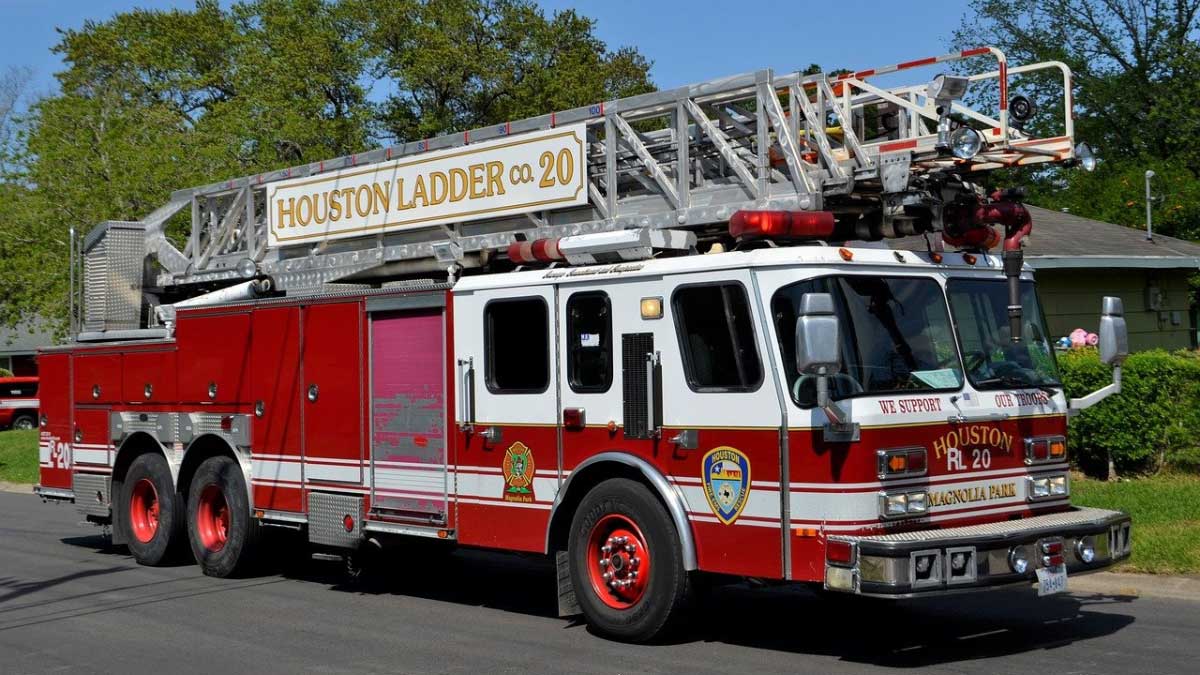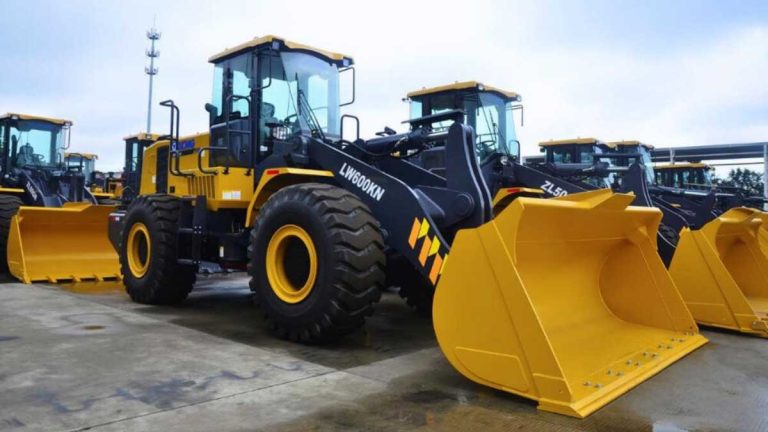How Much Does Fire Truck Weigh: An In-Depth Insight
When you see a fire truck racing down the street, its massive size and roaring presence are hard to ignore. With an average length of 40 feet, these vehicles are among the most imposing on the road. But have you ever wondered just how much a fire truck weighs?
A fully loaded fire truck tips the scales at a staggering 19 to 30 tons, which translates to about 38,000 to 60,000 pounds. Even when empty, these giants weigh between 11,500 and 14,500 pounds. This makes fire trucks some of the heaviest vehicles out there, rivaled only by garbage trucks and tractor-trailers.
Understanding the weight of a fire truck is crucial, not just for curiosity’s sake, but because it highlights the engineering marvels required to transport firefighters and essential rescue equipment efficiently. Let’s delve deeper into the factors that contribute to their weight and how they compare to other heavy-duty vehicles.
Key Takeaways
- Fire Truck Weight Range: Fully loaded fire trucks weigh between 38,000 to 60,000 pounds, while empty ones weigh between 11,500 and 14,500 pounds, making them among the heaviest vehicles on the road.
- Types of Fire Trucks: Different types of fire trucks, like aerial ladder trucks and standard fire engines, have varying weights due to their specific functions and the equipment they carry.
- Impact of Water on Weight: Water tanks can hold from 500 to 1,500 gallons, adding significantly to the total weight of a fire truck with each gallon of water weighing 8.3 pounds.
- Comparison with Other Vehicles: Fire trucks outweigh standard vehicles like cars and SUVs but are surpassed in weight by fully loaded tractor-trailers.
- Driving Considerations: Driving a fire truck requires specialized training due to their massive size and weight, impacting turning, stopping distance, and height clearance.
Understanding Fire Truck Weights
When you observe a fire truck barreling down the street, the enormity and heft of the vehicle can’t be ignored. Fire trucks, essential in emergency response, range from 38,000 to 60,000 pounds (19 to 30 tons) when fully equipped. Even when empty, these robust machines weigh between 11,500 to 14,500 pounds. This weight results from the diverse gear and capabilities required to combat fires effectively.

Types of Fire Trucks and Their Weights
- Standard Fire Engines: These are the most prevalent, weighing 20,000 to 40,000 pounds. They respond to various emergencies, carrying essential equipment and sometimes seating for six or more firefighters.
- Aerial Ladder Trucks: With a significant focus on extensions for reaching high places, these trucks can weigh up to 70,000 pounds. Additional structure and hydraulics for extending ladders add to their mass.
Impact of Water on Weight
Adding water significantly affects the total weight. A fire truck holds 500 to 1,500 gallons of water, adding 4,150 to 12,450 pounds to its base weight due to each gallon weighing 8.3 pounds.
| Vehicle Type | Weight (Pounds) |
|---|---|
| Concrete Trucks | Approximately 20,000 |
| Refuse Trucks | Around 20,000 |
| Tractor Trailers | 20,000 to 26,000 |
| Fully Loaded Fire Trucks | 38,000 to 60,000 |
This comparison shows that while fire trucks are among the heavier vehicles on the road, they are not the only substantial ones out there.
Understanding the weight of fire trucks helps appreciate the detailed engineering that goes into their design. Be it carrying rescue apparatus or managing extensive water loads, every pound counts towards saving lives and providing a safe ride for firefighters during emergencies.
Different Types of Fire Trucks
Fire trucks, integral to firefighting operations, come in various types with distinct weights and capabilities. You’ve likely seen different models responding to emergencies based on their specific design and function.
Type 1 Fire Engine
Type 1 fire engines, known for structural firefighting, usually weigh over 26,000 pounds. Fully loaded, they can reach 60,000 pounds. These trucks feature a minimum 300-gallon water tank and pump at least 1,000 gallons per minute at 150 psi, making them ideal for urban areas.
Type 2 Fire Engine
While Type 2 fire engines share many characteristics with Type 1, they often weigh within the same range. Common in suburban settings, they carry similar equipment and typically accommodate 3 to 4 crew members. They serve as the first line, handling initial firefighting tasks.
Type 3 Fire Engine
Primarily designed for wildland firefighting, Type 3 engines are more agile, with a GVWR around 26,000 pounds. These engines have a smaller water tank, between 500 to 1,000 gallons, and pumps that deliver lower GPM, suited for off-road terrains where maneuverability is crucial.
Wildland Fire Engines
Wildland fire engines, optimized for challenging terrains, range from Type 3 to Type 6. Their weight and tank size vary, generally lighter than urban-bound models. They provide critical support in wildland-urban interfaces, equipped with high-clearance and off-road capabilities to combat forest fires effectively.
Components Affecting Fire Truck Weight
When examining fire truck weight, understanding the contributing components is essential. Each component plays a crucial role in the overall heft of these vehicles.
Water Tanks
Water tanks on fire trucks significantly affect weight. These tanks can hold between 500 to 1,500 gallons of water. Since each gallon weighs approximately 8.3 pounds, a full tank can add between 4,150 and 12,450 pounds to the truck’s weight. The capacity of these tanks varies by truck type, with larger tanks typically found on vehicles designed for areas with less reliable water supply.
Equipment and Tools
The array of equipment and tools loaded onto a fire truck adds considerable weight. Fire trucks carry firefighting equipment, medical supplies, ladders, and other tools needed during emergencies. For example, aerial ladder trucks, designed to reach higher elevations, include extendable ladders and hydraulic systems, bringing their total weight up to 70,000 pounds. This additional mass ensures readiness and adaptability in various rescue scenarios.
Structural Design
The structural design of fire trucks influences their weight. Design elements like axles, chassis, and support structures contribute significantly. Trucks with tandem axles or tandem rear-drive steer axles are heavier, accommodating added features for enhanced operational capacity. Advanced structural engineering accounts for the diverse terrains and challenging conditions fire trucks often encounter.
Weigh Station Requirements for Fire Trucks
Fire trucks fall under specific legislation regarding weigh station checks based on their significant weight. Classified as heavy-duty vehicles due to their weight, often exceeding 19 to 30 tons, fire trucks may be subject to weigh station stops depending on jurisdiction. If the vehicle’s weight exceeds local commercial vehicle weight limits, fire departments may require a special permit. However, most fire trucks carry exemptions because they’re emergency response vehicles.
Regulatory agencies typically mandate weigh station compliance for commercial trucks with an axle weight that surpasses set thresholds. These checks ensure the vehicle’s weight doesn’t compromise road safety. For fire trucks, the focus is more on safety and operational readiness than regulatory compliance. Though generally exempt from stopping, if a fire truck carries water tanks or heavy firefighting equipment, you might still face weigh station stops to verify that the vehicle’s weight aligns with safety regulations.
Understanding these requirements guarantees that your fire trucks remain compliant, avoiding potential safety risks or legal complications. Take note of local regulations to maintain operational efficiency while on emergency calls.
Comparison with Other Vehicles
Understanding how fire trucks weigh in comparison to other vehicles provides insight into their engineering and functionality.
Vehicles Outweighed by Fire Trucks
Fire trucks are considerably heavier than many standard road vehicles.
- Cars: Most cars weigh around 3,000 pounds (1.5 tons). A fire truck ranges from 20,000 to 70,000 pounds, making it 10 to 20 times heavier.
- Pickup Trucks/SUVs: Typical pickup trucks or large SUVs weigh 4,500 to 6,000 pounds. Fire trucks still significantly outweigh them, even when fully loaded.
- Step Vans/Minibuses: Step vans and minibuses generally weigh between 7,650 and 8,750 pounds. Fire trucks, with their heavy-duty build and essential equipment, clearly surpass this weight.
Vehicles That Outweigh Fire Trucks
While fire trucks are among the heaviest vehicles on the road, some vehicles outweigh them.
- Concrete and Refuse Trucks: These vehicles can weigh around 20,000 pounds when empty, putting them in the same league as lighter fire trucks.
- Tractor Trailers: Loaded tractor trailers can reach up to 80,000 pounds, which is 20,000 pounds more than the largest fire trucks. As the heaviest on the road, they demonstrate the structural capacity required for freight transport.
These comparisons highlight the engineering marvel that is the fire truck, designed to ensure swift, safe transport and operations during emergencies. Despite their relative heft, other vehicles like loaded tractor trailers present a competitive weight class, underlining the diverse range of heavy-duty vehicles sharing the roads.
What It’s Like to Drive a Heavy Fire Truck
Driving a fire truck is a unique experience given its massive size and weight. With dimensions that can reach up to 40 feet in length and a weight ranging from 38,000 to 60,000 pounds when fully loaded, this isn’t your average vehicle. The weight alone demands a special set of skills from drivers, requiring awareness and precision.
Challenges of Maneuvering
Wide Turns: Fire trucks, due to their extended length, require more space to execute turns. If a turn is tight, you’ll need to deploy precision steering techniques.
Stopping Distance: With a weight significantly greater than most vehicles on the road, the stopping distance for a fire truck increases. It’s essential to maintain a safe distance from other vehicles to prevent collisions.
Height and Clearance: Many fire trucks are equipped with aerial apparatus, which impacts their height. Consider overhanging structures or bridges when navigating routes.
Importance of Weight Distribution
Understanding the distribution of weight is crucial in managing a fire truck. Equipment, water tanks, and additional firefighting tools must be strategically loaded to maintain balance and control. Imbalance can lead to hazardous driving conditions, especially in emergencies.
Training and Skill Requirements
Fire truck drivers undergo rigorous training to operate these vehicles safely. Proficiency in handling the vehicle’s mechanical systems, such as braking, steering, and hydraulics, is required. Practical experience in diverse terrains, from urban to rural settings, enhances preparedness for any situation.
Comparative Perspective
Comparatively, fire trucks weigh more than standard vehicles like cars and SUVs but less than some heavy-duty trucks like loaded tractor trailers, which can weigh up to 80,000 pounds. This balance of heft and agility is necessary for their specialized function, reminding you of their engineering marvel and role in public safety.
Understanding these elements provides insight into the complexities faced by fire truck drivers, underpinning the importance of meticulous design and skilled handling in ensuring effective emergency response.
Conclusion
Understanding the weight of fire trucks provides valuable insight into their engineering marvel and operational capabilities. These vehicles are not only heavy-duty machines but also essential tools designed to ensure safety and efficiency during emergencies. The impressive weight of fire trucks, influenced by their water tanks, equipment, and structural components, highlights the complexity involved in their design and function. As you appreciate the intricacies of these vehicles, it becomes clear that their substantial weight is a testament to their crucial role in emergency response, requiring skilled handling and adherence to safety regulations.







